| Listing 1 - 10 of 16 | << page >> |
Sort by
|
Book
ISBN: 9783540320197 Year: 2005 Publisher: Berlin Heidelberg Springer-Verlag GmbH.
Abstract | Keywords | Export | Availability | Bookmark
 Loading...
Loading...Choose an application
- Reference Manager
- EndNote
- RefWorks (Direct export to RefWorks)
It is always a special honor to chair the European Dependable Computing C- ference (EDCC). EDCC has become one of the well-established conferences in the ?eld of dependability in the European research area. Budapest was selected as the host of this conference due to its traditions in organizing international scienti?c events and its traditional role of serving as a meeting point between East and West. EDCC-5 was the ?fth in the series of these high-quality scienti?c conf- ences. In addition to the overall signi?cance of such a pan-European event, this year's conference was a special one due to historic reasons. The roots of EDCC date back to the moment when the Iron Curtain fell. Originally, two groups of scientists from di?erent European countries in Western and Eastern Europe - who were active in research and education related to dependability created a - joint forum in order to merge their communities as early as in 1989. This trend has continued up to today. This year's conference was the ?rst one where the overwhelming majority of the research groups belong to the family of European nations united in the European Union. During the past 16 years we observed that the same roots in all the professional, cultural and scienti?c senses led to a seamless integration of these research communities previously separated ar- ?cially for a long time. EDCC has become one of the main European platforms to exchange new - searchideasinthe?eldofdependability.
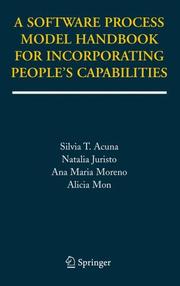
ISBN: 1280609206 9786610609208 0387254897 0387244328 1441937463 Year: 2005 Publisher: New York : Springer,
Abstract | Keywords | Export | Availability | Bookmark
 Loading...
Loading...Choose an application
- Reference Manager
- EndNote
- RefWorks (Direct export to RefWorks)
A Software Process Model Handbook for Incorporating People's Capabilities offers the most advanced approach to date, empirically validated at software development organizations. This handbook adds a valuable contribution to the much-needed literature on people-related aspects in software engineering. The primary focus is on the particular challenge of extending software process definitions to more explicitly address people-related considerations. The capability concept is not present nor has it been considered in most software process models. The authors have developed a capabilities-oriented software process model, which has been formalized in UML and implemented as a tool. A Software Process Model Handbook for Incorporating People's Capabilities guides readers through the incorporation of the individual’s capabilities into the software process. Structured to meet the needs of research scientists and graduate-level students in computer science and engineering, A Software Process Model Handbook for Incorporating People's Capabilities is also suitable for practitioners in industry.
Computer software --- Human-computer interaction. --- Development. --- Computer-human interaction --- Human factors in computing systems --- Interaction, Human-computer --- Human engineering --- User-centered system design --- User interfaces (Computer systems) --- Development of computer software --- Software development --- Computer science. --- Computer system performance. --- Computer simulation. --- Software engineering. --- Programming Languages, Compilers, Interpreters. --- System Performance and Evaluation. --- Programming Techniques. --- Models and Principles. --- Simulation and Modeling. --- Software Engineering/Programming and Operating Systems. --- Computer software engineering --- Engineering --- Computer modeling --- Computer models --- Modeling, Computer --- Models, Computer --- Simulation, Computer --- Electromechanical analogies --- Mathematical models --- Simulation methods --- Model-integrated computing --- Informatics --- Science
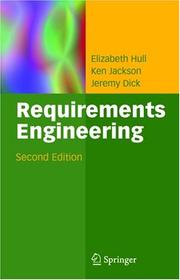
ISBN: 128031222X 9786610312221 1601193106 1846280753 1852338792 Year: 2005 Publisher: London : Springer,
Abstract | Keywords | Export | Availability | Bookmark
 Loading...
Loading...Choose an application
- Reference Manager
- EndNote
- RefWorks (Direct export to RefWorks)
This second edition follows quickly on the ?rst edition and is an indication of how fast the subject is changing and developing. In the past two years there have been signi?cant advances and these are re?ected in this new edition. Essentially, this is an update that places more emphasis on modelling by describing a greater range of approaches to system modelling. It introduces the UML2, which is the recent standard approved by the OMG. There is also an enhanced discussion on the relationship between requirements management and modelling, which relates well to the concept of rich traceability. The chapter on the requirements management tool DOORS has been revised to use Version 7 of the tool and this is complemented with examples taken from the DOORS/Analyst tool which demonstrates how the concepts of modelling can be captured and created within DOORS. The text is still aimed at students and practitioners of systems engineering who are keen to gain knowledge of using requirements engineering for system development. As before, a web site supporting additional material is available at: http://www.requirementsengineering.info Elizabeth Hull Ken Jackson Jeremy Dick June 2004 vii Preface to the First Edition Requirements Engineering is common sense, but it is perceived to be dif?cult and is not well understood. For these reasons it is generally not very well done.
Systems engineering. --- Engineering. --- Construction --- Industrial arts --- Technology --- Engineering systems --- System engineering --- Engineering --- Industrial engineering --- System analysis --- Design and construction --- Information Technology --- Software Engineering --- Software engineering. --- Computer system performance. --- Computer network architectures. --- Computer science. --- Software Engineering. --- System Performance and Evaluation. --- Computer System Implementation. --- User Interfaces and Human Computer Interaction. --- Informatics --- Science --- Architectures, Computer network --- Network architectures, Computer --- Computer architecture --- Computer software engineering --- Computer system failures. --- Architecture, Computer. --- User interfaces (Computer systems). --- Interfaces, User (Computer systems) --- Human-machine systems --- Human-computer interaction --- Architecture, Computer --- Computer failures --- Computer malfunctions --- Computer systems --- Failure of computer systems --- System failures (Engineering) --- Fault-tolerant computing --- Failures
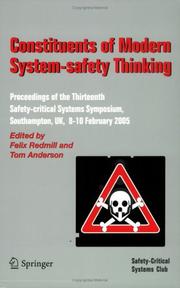
ISBN: 1281216410 9786611216412 184628130X 1852339527 Year: 2005 Publisher: London : Springer,
Abstract | Keywords | Export | Availability | Bookmark
 Loading...
Loading...Choose an application
- Reference Manager
- EndNote
- RefWorks (Direct export to RefWorks)
Constituents of Modern System-safety Thinking contains the invited papers presented at the Thirteenth annual Safety-critical Systems Symposium, held at Southampton, UK in February 2005. The papers included in this volume bring together topics that are of the utmost importance in current safety thinking. The core of modern safety thinking and practice is a risk-based approach, and, this is not only a common thread running throughout the papers, but is also explored in two of them. Other themes considered include the safety case, safety assessment, accident investigation, and the commonality between the processes and techniques employed in safety and security engineering. Papers contain extensive industrial experience as well as recent academic research and are presented under the headings: Independent Safety Assessment, Safety and Security, Accident Investigation, Risk and its Tolerability, Achieving and Arguing the Safety of Modular Systems, and Technologies for Dependability.
Industrial safety --- Automatic control --- Computer software --- Management --- Reliability --- Industrial accidents --- Industries --- Job safety --- Occupational hazards, Prevention of --- Occupational health and safety --- Occupational safety and health --- Prevention of industrial accidents --- Prevention of occupational hazards --- Safety, Industrial --- Safety engineering --- Safety measures --- Safety of workers --- Accidents --- System safety --- Prevention --- Information Technology --- Software Engineering --- Software engineering. --- Computer system performance. --- Software Engineering. --- System Performance and Evaluation. --- Computer software engineering --- Engineering --- Computer system failures. --- Computer failures --- Computer malfunctions --- Computer systems --- Failure of computer systems --- System failures (Engineering) --- Fault-tolerant computing --- Failures
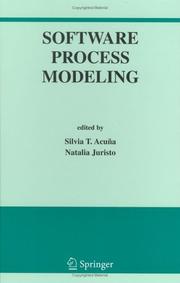
ISBN: 1280337443 9786610337446 0387242627 0387242619 1441937102 Year: 2005 Publisher: New York ; [Great Britain] : Springer,
Abstract | Keywords | Export | Availability | Bookmark
 Loading...
Loading...Choose an application
- Reference Manager
- EndNote
- RefWorks (Direct export to RefWorks)
Software Process Modeling brings together experts to discuss relevant results in software process modeling, and expresses their personal view of this field. This book focuses on new aspects of software process modeling. Specifically, it deals with socio-technological aspects, process modeling for new development types (open source software, dependability applications, etc.) and organization change management. The computer audience is placing growing demands on the software industry today. They are looking for more complex products that are, at the same time, easier to use. Software developer organizations are expected to produce higher quality products and deliver them to the public faster. In so doing, however, globally distributed development teams have to cope with understaffing and changing technologies. The challenges for the software industry are apparently mounting. Over the years, a variety of software process models have been designed to structure, describe and prescribe the software systems construction process. Most recently, software process modeling increasingly deals with new challenges raised by the tests that the software industry has to stand. Software Process Modeling is designed for a professional audience composed of researchers and practitioners in industry. The book is also suitable for graduate-level students in computer science.
Computer software --- Open source software --- Development. --- Technological innovations. --- Free software (Open source software) --- Open code software --- Opensource software --- Development of computer software --- Software development --- Computer science. --- Computer simulation. --- Computer system performance. --- Software engineering. --- Programming Languages, Compilers, Interpreters. --- Simulation and Modeling. --- Programming Techniques. --- Models and Principles. --- System Performance and Evaluation. --- Software Engineering/Programming and Operating Systems. --- Computer modeling --- Computer models --- Modeling, Computer --- Models, Computer --- Simulation, Computer --- Electromechanical analogies --- Mathematical models --- Simulation methods --- Model-integrated computing --- Informatics --- Science --- Computer software engineering --- Engineering --- Programming languages (Electronic computers). --- Computer programming. --- Computers. --- Computer system failures. --- Computer failures --- Computer malfunctions --- Computer systems --- Failure of computer systems --- System failures (Engineering) --- Fault-tolerant computing --- Automatic computers --- Automatic data processors --- Computer hardware --- Computing machines (Computers) --- Electronic brains --- Electronic calculating-machines --- Electronic computers --- Hardware, Computer --- Cybernetics --- Machine theory --- Calculators --- Cyberspace --- Computers --- Electronic computer programming --- Electronic data processing --- Electronic digital computers --- Programming (Electronic computers) --- Coding theory --- Computer languages --- Computer program languages --- Computer programming languages --- Machine language --- Languages, Artificial --- Failures --- Programming
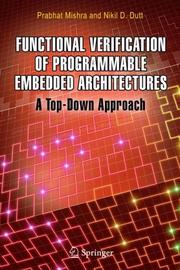
ISBN: 1280234296 9786610234295 0387263993 0387261435 1489973362 Year: 2005 Publisher: New York : Springer,
Abstract | Keywords | Export | Availability | Bookmark
 Loading...
Loading...Choose an application
- Reference Manager
- EndNote
- RefWorks (Direct export to RefWorks)
Validation of programmable architectures, consisting of processor cores, coprocessors, and memory subsystems, is one of the major bottlenecks in current System-on-Chip design methodology. A critical challenge in validation of such systems is the lack of a golden reference model. As a result, many existing validation techniques employ a bottom-up approach to design verification, where the functionality of an existing architecture is, in essence, reverse-engineered from its implementation. Traditional validation techniques employ different reference models depending on the abstraction level and verification task, resulting in potential inconsistencies between multiple reference models. This book presents a top-down validation methodology that complements the existing bottom-up approaches. It leverages the system architect’s knowledge about the behavior of the design through architecture specification using an Architecture Description Language (ADL). The authors also address two fundamental challenges in functional verification: lack of a golden reference model, and lack of a comprehensive functional coverage metric. Functional Verification of Programmable Embedded Architectures: A Top-Down Approach is designed for students, researchers, CAD tool developers, designers, and managers interested in the development of tools, techniques and methodologies for system-level design, microprocessor validation, design space exploration and functional verification of embedded systems.
Embedded computer systems --- Computer architecture. --- Integrated circuits --- Testing. --- Verification. --- Hardware verification --- Integrated circuit verification --- Verification of hardware --- Verification of integrated circuits --- Architecture, Computer --- Embedded systems (Computer systems) --- Computer systems --- Architecture Analysis and Design Language --- Systems engineering. --- Computer science. --- Software engineering. --- Computer aided design. --- Computer system performance. --- Computer engineering. --- Circuits and Systems. --- Processor Architectures. --- Special Purpose and Application-Based Systems. --- Computer-Aided Engineering (CAD, CAE) and Design. --- System Performance and Evaluation. --- Electrical Engineering. --- Computers --- CAD (Computer-aided design) --- Computer-assisted design --- Computer-aided engineering --- Design --- Computer software engineering --- Engineering --- Informatics --- Science --- Engineering systems --- System engineering --- Industrial engineering --- System analysis --- Design and construction --- Electronic circuits. --- Microprocessors. --- Special purpose computers. --- Computer-aided engineering. --- Computer system failures. --- Electrical engineering. --- Electric engineering --- Computer failures --- Computer malfunctions --- Failure of computer systems --- System failures (Engineering) --- Fault-tolerant computing --- CAE --- Special purpose computers --- Minicomputers --- Electron-tube circuits --- Electric circuits --- Electron tubes --- Electronics --- Failures --- Data processing
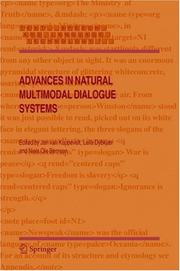
ISBN: 128061255X 9786610612550 1402039336 1402039328 Year: 2005 Volume: v. 30 Publisher: Dordrecht : Springer,
Abstract | Keywords | Export | Availability | Bookmark
 Loading...
Loading...Choose an application
- Reference Manager
- EndNote
- RefWorks (Direct export to RefWorks)
References 74 Part II Annotation and Analysis of Multimodal Data: Speech and Gesture 4 FORM 79 Craig H. Martell 1. Introduction 79 2. Structure of FORM 80 3. Annotation Graphs 85 4. Annotation Example 86 5. Preliminary Inter-Annotator Agreement Results 88 6. Conclusion: Applications to HLT and HCI? 90 Appendix: Other Tools, Schemes and Methods of Gesture Analysis 91 References 95 5 97 On the Relationships among Speech, Gestures, and Object Manipulation in Virtual Environments: Initial Evidence Andrea Corradini and Philip R. Cohen 1. Introduction 97 2. Study 99 3. Data Analysis 101 4. Results 103 5. Discussion 106 6. Related Work 106 7. Future Work 108 8. Conclusions 108 Appendix: Questionnaire MYST III - EXILE 110 References 111 6 113 Analysing Multimodal Communication Patrick G. T. Healey, Marcus Colman and Mike Thirlwell 1. Introduction 113 2. Breakdown and Repair 117 3. Analysing Communicative Co-ordination 125 4. Discussion 126 References 127 7 131 Do Oral Messages Help Visual Search? Noëlle Carbonell and Suzanne Kieffer 1. Context and Motivation 131 2. Methodology and Experimental Set-Up 134 3. Results: Presentation and Discussion 141 4. Conclusion 153 References 154 Contents vii 8 159 Geometric and Statistical Approaches to Audiovisual Segmentation Trevor Darrell, John W. Fisher III, Kevin W. Wilson, and Michael R. Siracusa 1. Introduction 159 2. Related Work 160 3. Multimodal Multisensor Domain 162 4. Results 166 5. Single Multimodal Sensor Domain 167 6.
Conversation analysis --- Nonverbal communication --- Multimodal dialogue systems --- Non-verbal communication --- Communication --- Expression --- Analysis of conversation --- CA (Interpersonal communication) --- Conversational analysis --- Oral communication --- Computational linguistics. --- Computer system performance. --- Multimedia systems. --- Computer science. --- Computational Linguistics. --- Sociology, general. --- Communication Studies. --- System Performance and Evaluation. --- Multimedia Information Systems. --- User Interfaces and Human Computer Interaction. --- Informatics --- Science --- Computer-based multimedia information systems --- Multimedia computing --- Multimedia information systems --- Multimedia knowledge systems --- Information storage and retrieval systems --- Automatic language processing --- Language and languages --- Language data processing --- Linguistics --- Natural language processing (Linguistics) --- Applied linguistics --- Cross-language information retrieval --- Mathematical linguistics --- Multilingual computing --- Data processing --- Sociology. --- Communication. --- Computer system failures. --- Multimedia information systems. --- User interfaces (Computer systems). --- Computer failures --- Computer malfunctions --- Computer systems --- Failure of computer systems --- System failures (Engineering) --- Fault-tolerant computing --- Interfaces, User (Computer systems) --- Human-machine systems --- Human-computer interaction --- Communication, Primitive --- Mass communication --- Sociology --- Social theory --- Social sciences --- Failures
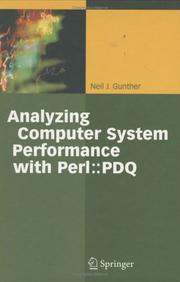
ISBN: 1280313056 9786610313051 354026860X 3540208658 3642058833 Year: 2005 Publisher: Berlin ; London : Springer,
Abstract | Keywords | Export | Availability | Bookmark
 Loading...
Loading...Choose an application
- Reference Manager
- EndNote
- RefWorks (Direct export to RefWorks)
Analyzing computer system performance is often regarded by most system administrators, IT professionals and software engineers as a black art that is too time consuming to learn and apply. Finally, this book by acclaimed performance analyst Dr. Neil Gunther makes this subject understandable and applicable through programmatic examples. The means to this end is the open-source performance analyzer Pretty Damn Quick (PDQ) written in Perl and available for download from the author’s Website: www.perfdynamics.com. As the epigraph in this book points out, Common sense is the pitfall of performance analysis. The performance analysis framework that replaces common sense is revealed in the first few chapters of Part I. The important queueing concepts embedded in PDQ are explained in a very simple style that does not require any knowledge of formal probability theory. Part II begins with a full specification of how to set up and use PDQ replete with examples written in Perl. Subsequent chapters present applications of PDQ to the performance analysis of multicomputer architectures, benchmark results, client/server scalability, and Web-based applications. The examples are not mere academic toys but are based on the author's experience analyzing the performance of large-scale systems over the past 20 years. By following his lead, you will quickly be able to set up your own Perl scripts for collecting data and exploring performance-by-design alternatives without inflating your manager’s schedule.
Computer systems --- Perl (Computer program language) --- Evaluation. --- Pathologically Eclectic Rubbish Lister (Computer program language) --- Practical Extraction and Report Language (Computer program language) --- Scripting languages (Computer science) --- ADP systems (Computer systems) --- Computing systems --- Systems, Computer --- Electronic systems --- Cyberinfrastructure --- Software engineering. --- Computer system performance. --- Operating systems (Computers). --- Information Systems. --- Software Engineering. --- System Performance and Evaluation. --- Operating Systems. --- Management of Computing and Information Systems. --- Computer operating systems --- Computers --- Disk operating systems --- Systems software --- Computer software engineering --- Engineering --- Operating systems --- Computer system failures. --- Management information systems. --- Computer science. --- Informatics --- Science --- Computer-based information systems --- EIS (Information systems) --- Executive information systems --- MIS (Information systems) --- Sociotechnical systems --- Information resources management --- Management --- Computer failures --- Computer malfunctions --- Failure of computer systems --- System failures (Engineering) --- Fault-tolerant computing --- Communication systems --- Failures

ISBN: 9780387230443 0387230440 1280412631 9786610412631 0387230440 0387230432 144193569X Year: 2005 Publisher: Boston, MA Springer Science + Business Media, Inc.
Abstract | Keywords | Export | Availability | Bookmark
 Loading...
Loading...Choose an application
- Reference Manager
- EndNote
- RefWorks (Direct export to RefWorks)
Event-Triggered and Time-Triggered Control Paradigms presents a valuable survey about existing architectures for safety-critical applications and discusses the issues that must be considered when moving from a federated to an integrated architecture. The book focuses on one key topic--the amalgamation of the event-triggered and the time-triggered control paradigm into a coherent integrated architecture. The architecture provides for the integration of independent distributed application subsystems by introducing multi-criticality nodes and virtual networks of known temporal properties.
Computer. Automation --- Computer architecture. Operating systems --- informatica --- Programming --- architectuur (informatica) --- computerbesturingssystemen --- programmeren (informatica) --- Computer science --- toegepaste informatica --- Software engineering. --- Information theory. --- Computer science. --- Computer system performance. --- Computer network architectures. --- Special Purpose and Application-Based Systems. --- Theory of Computation. --- Processor Architectures. --- System Performance and Evaluation. --- Computer System Implementation. --- Computer software engineering --- Engineering --- Architectures, Computer network --- Network architectures, Computer --- Computer architecture --- Informatics --- Science --- Communication theory --- Communication --- Cybernetics --- Special purpose computers. --- Computers. --- Microprocessors. --- Computer system failures. --- Architecture, Computer. --- Architecture, Computer --- Computer failures --- Computer malfunctions --- Computer systems --- Failure of computer systems --- System failures (Engineering) --- Fault-tolerant computing --- Minicomputers --- Automatic computers --- Automatic data processors --- Computer hardware --- Computing machines (Computers) --- Electronic brains --- Electronic calculating-machines --- Electronic computers --- Hardware, Computer --- Machine theory --- Calculators --- Cyberspace --- Special purpose computers --- Computers --- Failures --- Real-time control.
Book
ISBN: 9783540319030 Year: 2005 Publisher: Berlin Heidelberg Springer-Verlag GmbH.
Abstract | Keywords | Export | Availability | Bookmark
 Loading...
Loading...Choose an application
- Reference Manager
- EndNote
- RefWorks (Direct export to RefWorks)
This volume contains the proceedings of two international workshops EPEW and WS-FM held atthe Universit´ ede VersaillesSaint-Quentin-en-Yvelines,V- sailles, France, 1-3 September 2005. EPEW (European Performance Engineering Workshop) and WS-FM (Int- national Workshop on Web Services and Formal Methods) were colocated to gather the researchers working across the spectrum of techniques for modelling, speci?cation, analysis and veri?cation of the behavior of computer systems and business processes. This proceedings contains a selection of 20 research contributions, out of 59 submissions, which went through a rigorous review process by international reviewers. We therefore owe special thanks to all members of both program committees of EPEW and WS-FM and their sub-referees for the excellent work they did in the short time they had. Additionally, this proceedings includes four invited papers, by Gianfranco Ciardo (University of California at Riverside), Peter G. Harrison (Imperial C- lege London), Cosimo Laneve (University of Bologna) and Wil van der Aalst (Eindhoven University of Technology). These contributions brought an ad- tional dimension to the technical and the scienti?c merit of these workshops. Finally,ourthanksgototheUniversityofVersaillesSaint-Quentin-en-Yvelines, its Laboratoire PRiSM and the CNRS for hosting the workshops and providing technicaland?nancialsupport.
software engineering --- Computer. Automation --- maatschappij --- Computer architecture. Operating systems --- informatica --- computernetwerken --- computerbesturingssystemen --- programmeren (informatica) --- Computer science --- Formal methods (Computer science) --- Stochastic models --- Computer systems --- Evaluation --- Software engineering. --- Computer Communication Networks. --- Logic design. --- Computer system performance. --- Computer science. --- Software Engineering. --- Logics and Meanings of Programs. --- System Performance and Evaluation. --- Computers and Society. --- Informatics --- Science --- Design, Logic --- Design of logic systems --- Digital electronics --- Electronic circuit design --- Logic circuits --- Machine theory --- Switching theory --- Computer software engineering --- Engineering --- Computer communication systems. --- Computer logic. --- Computer system failures. --- Computers and civilization. --- Civilization and computers --- Civilization --- Computer failures --- Computer malfunctions --- Failure of computer systems --- System failures (Engineering) --- Fault-tolerant computing --- Computer science logic --- Logic, Symbolic and mathematical --- Communication systems, Computer --- Computer communication systems --- Data networks, Computer --- ECNs (Electronic communication networks) --- Electronic communication networks --- Networks, Computer --- Teleprocessing networks --- Data transmission systems --- Digital communications --- Electronic systems --- Information networks --- Telecommunication --- Cyberinfrastructure --- Electronic data processing --- Network computers --- Failures --- Distributed processing --- Computer networks. --- Electronic digital computers—Evaluation. --- Computer Science Logic and Foundations of Programming.
| Listing 1 - 10 of 16 | << page >> |
Sort by
|

 Search
Search Feedback
Feedback About UniCat
About UniCat  Help
Help News
News